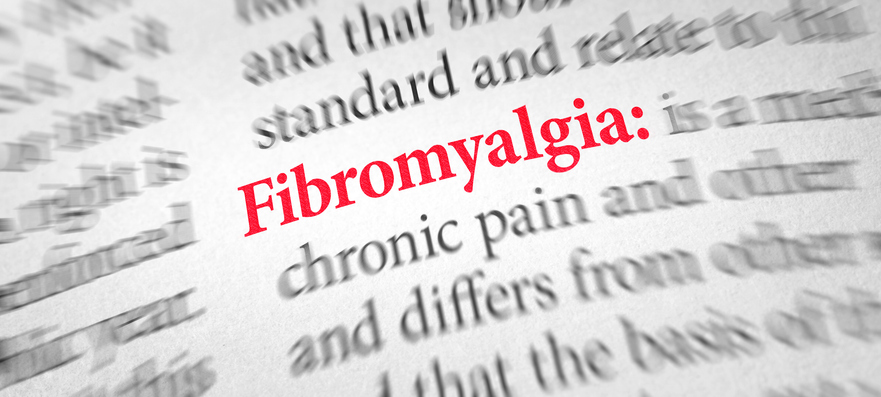2025-05-13
Fibromyalgia: which path to choose?
Rhumatology
#Fibromyalgia #Sleep #Fatigue #Physiotherapy
#Relaxation #CombinedCare
Fibromyalgia is a complex chronic syndrome characterized by widespread musculoskeletal pain, persistleep disturbances,ent fatigue, s and a broad range of symptoms including cognitive, digestive, and autonomic disorders. This condition predominantly affects women, often between the ages of 30 and 55. It has a profound impact on quality of life, autonomy, and psychological well-being.
Despite international recommendations advocating for a multidisciplinary approach, the management of fibromyalgia remains a therapeutic challenge. Patient adherence is often hindered by the chronic nature of symptoms and the absence of a curative treatment. Furthermore, the available pharmacological options—analgesics, antidepressants, anticonvulsants—demonstrate limited effectiveness on functional dimensions and fatigue.
In this context, non-drug approaches are gaining traction. Among them, intrinsic relaxation—based on controlled breathing, body awareness, and sensory listening—is increasingly being integrated into complementary care strategies. Often positively received by patients, it remains poorly documented in scientific literature in terms of measurable efficacy. This study was initiated to compare the impact of a guided relaxation program versus a supervised multidisciplinary treatment on two key symptoms of fibromyalgia: sleep and fatigue.
In this study, 60 patients with fibromyalgia were selected and randomly divided into two groups:
Evaluations were based on the Fatigue Severity Scale (FSS) and the Pittsburgh Sleep Quality Index (PSQI).
Among hospitalized patients, a significant improvement was observed. The FSS score decreased notably, and overall sleep quality improved according to the PSQI. These improvements included better sleep efficiency, longer duration, reduced latency, and less use of sleep aids.
In contrast, patients who followed the home relaxation program experienced very limited effects. The FSS score remained stable with no significant change. The PSQI showed a slight, non-statistically significant improvement. Lastly, no noticeable change was observed in functional capacities during the day.
Fibromyalgia is a chronic condition marked by diffuse pain, persistent fatigue, and sleep disturbances, with pathophysiological mechanisms still poorly understood. One of the main clinical challenges lies in the complex interaction between autonomic imbalance, sleep deterioration, and the perception of fatigue, forming a vicious cycle that is difficult to break. Given the limited effectiveness of pharmacological treatments alone, the search for complementary, accessible, and well-tolerated strategies becomes essential.
The aim of this study was to compare the impact of a multidisciplinary inpatient treatment to that of a guided home relaxation program on two key aspects of fibromyalgia: fatigue and sleep quality.
The results show that a structured approach in a specialized facility leads to significant improvement in fatigue and sleep, in contrast to autonomous relaxation, whose effects were minimal. These findings confirm the superiority of a comprehensive therapeutic strategy—combining physical, sensory, and educational interventions—over an approach focused solely on subjective well-being.
However, interpretation of the results must consider several limitations: the short duration of the intervention (two weeks), the small sample size, and the lack of longitudinal follow-up. These factors limit the generalizability of the conclusions.
Further studies over longer periods and including evaluations of psychological, neurophysiological, and functional parameters will be necessary to validate these results on a larger scale. These perspectives underscore the importance of developing combined, personalized, and sustainable care pathways for more complete and effective management of fibromyalgia.
Fibromyalgia is a complex chronic syndrome characterized by widespread musculoskeletal pain, persistleep disturbances,ent fatigue, s and a broad range of symptoms including cognitive, digestive, and autonomic disorders. This condition predominantly affects women, often between the ages of 30 and 55. It has a profound impact on quality of life, autonomy, and psychological well-being.
Despite international recommendations advocating for a multidisciplinary approach, the management of fibromyalgia remains a therapeutic challenge. Patient adherence is often hindered by the chronic nature of symptoms and the absence of a curative treatment. Furthermore, the available pharmacological options—analgesics, antidepressants, anticonvulsants—demonstrate limited effectiveness on functional dimensions and fatigue.
In this context, non-drug approaches are gaining traction. Among them, intrinsic relaxation—based on controlled breathing, body awareness, and sensory listening—is increasingly being integrated into complementary care strategies. Often positively received by patients, it remains poorly documented in scientific literature in terms of measurable efficacy. This study was initiated to compare the impact of a guided relaxation program versus a supervised multidisciplinary treatment on two key symptoms of fibromyalgia: sleep and fatigue.
Supervised care or guided autonomy?
In this study, 60 patients with fibromyalgia were selected and randomly divided into two groups:
- Group EG1: inpatient care including physiotherapy, hydrotherapy, electrotherapy, massage, and guided exercises (2 weeks);
- Group EG2: daily intrinsic relaxation at home, using the Parow method (20 minutes/day).
Evaluations were based on the Fatigue Severity Scale (FSS) and the Pittsburgh Sleep Quality Index (PSQI).
Among hospitalized patients, a significant improvement was observed. The FSS score decreased notably, and overall sleep quality improved according to the PSQI. These improvements included better sleep efficiency, longer duration, reduced latency, and less use of sleep aids.
In contrast, patients who followed the home relaxation program experienced very limited effects. The FSS score remained stable with no significant change. The PSQI showed a slight, non-statistically significant improvement. Lastly, no noticeable change was observed in functional capacities during the day.
Read next: Fibromyalgia: It may be of autoimmune origin!
Structuring care for better relief
Fibromyalgia is a chronic condition marked by diffuse pain, persistent fatigue, and sleep disturbances, with pathophysiological mechanisms still poorly understood. One of the main clinical challenges lies in the complex interaction between autonomic imbalance, sleep deterioration, and the perception of fatigue, forming a vicious cycle that is difficult to break. Given the limited effectiveness of pharmacological treatments alone, the search for complementary, accessible, and well-tolerated strategies becomes essential.
The aim of this study was to compare the impact of a multidisciplinary inpatient treatment to that of a guided home relaxation program on two key aspects of fibromyalgia: fatigue and sleep quality.
The results show that a structured approach in a specialized facility leads to significant improvement in fatigue and sleep, in contrast to autonomous relaxation, whose effects were minimal. These findings confirm the superiority of a comprehensive therapeutic strategy—combining physical, sensory, and educational interventions—over an approach focused solely on subjective well-being.
However, interpretation of the results must consider several limitations: the short duration of the intervention (two weeks), the small sample size, and the lack of longitudinal follow-up. These factors limit the generalizability of the conclusions.
Further studies over longer periods and including evaluations of psychological, neurophysiological, and functional parameters will be necessary to validate these results on a larger scale. These perspectives underscore the importance of developing combined, personalized, and sustainable care pathways for more complete and effective management of fibromyalgia.
Read next: Physiotherapy in musculoskeletal disorders

Last press reviews
Twice-yearly injections to change the game?

By Ana Espino | Published on December 3rd, 2025 | 3 min read
HIV & young people: what if we changed the rules?

By Ana Espino | Published on December 2nd, 2025 | 2 min read
